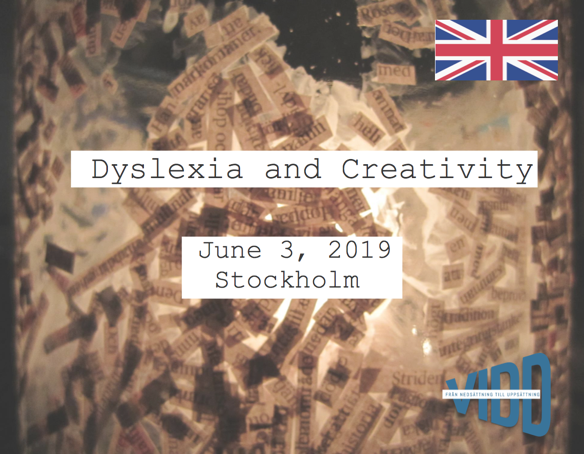One year ago: ”Dyslexia and Creativity” in Stockholm
Today it is one year since the international dyslexia conference; Dyslexia and Creativity in Stockholm.

Some information of the day:
Dyslexia and Creativity
June 3rd 2019,
Clarion Hotel Sign
Stockholm, Sweden
– How should we relate to dyslexia?
– Could we consider dyslexia to be more than simply problems in reading and writing abilities?
– Are there differences in skills concerning thinking and creativity?
– What could ”dyslexia strengths” mean?
Welcome to an information day with international and Swedish speakers – the first of its kind in Sweden.
Meet among others:
Drs. Brock and Fernette Eide, The Dyslexic Advantage, USA
Thomas G. West, author and lecturer, USA
Gunnar Bjursell, professor, Sweden
Gustav Källstrand, historian and Nobel Prize expert, Sweden
Susanna Cederquist, author and lecturer,Sweden
Dr. Helen Taylor, Researcher, the University of Cambridge, England
The Prince Carl Philip and Princess Sofia Foundation, Sweden
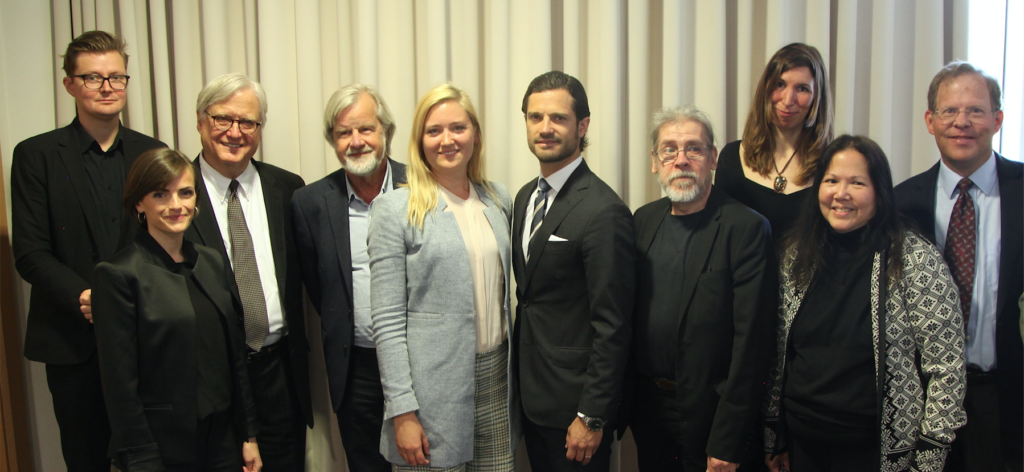
A thematic art exhibition where students from among others the Forsberg’s school will display their works during the day.
This day highlights the VIDD project’s subheading; from impairment to special skills. We will highlight, among other things, thinking, innovative processes, creating and our naturally diverse ways of functioning.
The full content of this will be available in both Swedish and English.

Questions to be discussed are:
– Why do we need to discuss a much broader perspective on what we call dyslexia?
– What consequences could this lead to for the Swedish society?
– How can and will you, as teachers and leaders for aesthetic activities, relate to this?
– What consequences should a reformed view on dyslexia have on education systems and the labor market?
– Norms and Society; What could we gain from understanding and taking the strengths seriously?
– You are warmly welcomed, with or without dyslexia, as teachers, school leaders, employers, politicians and everyone else interested in the subject!
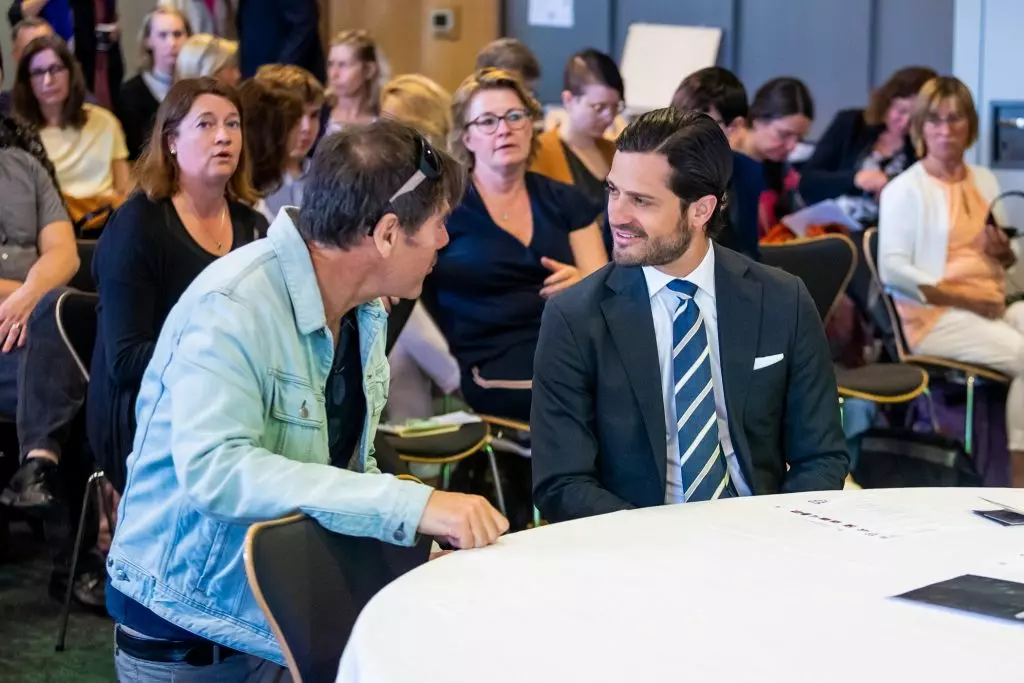
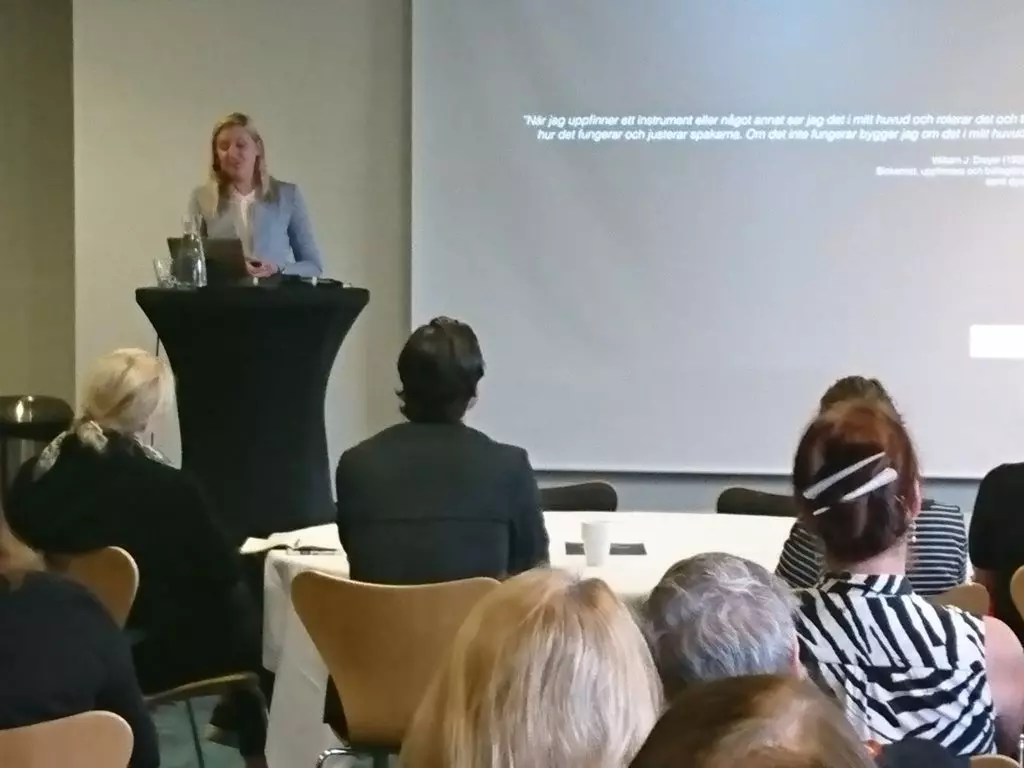
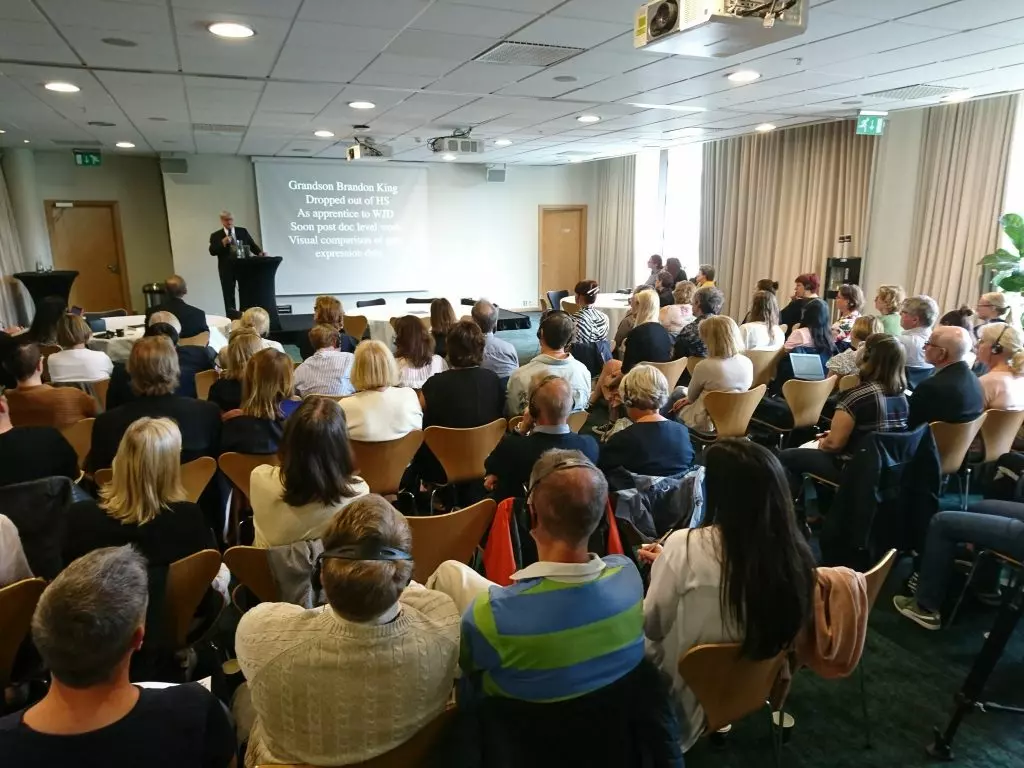
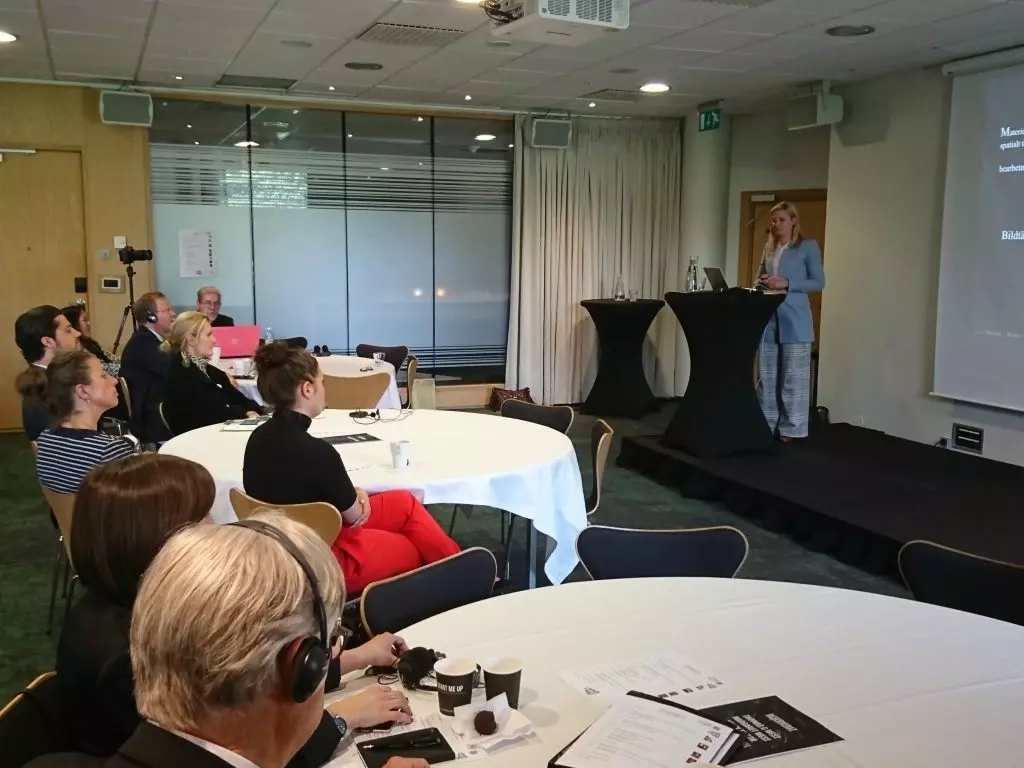
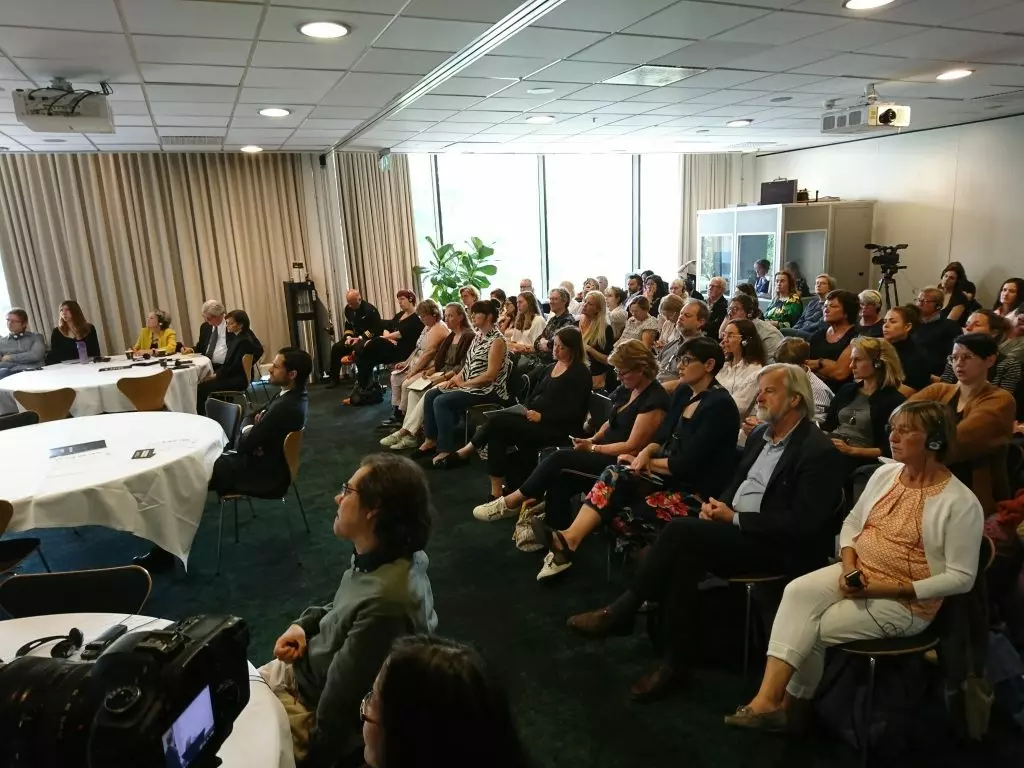
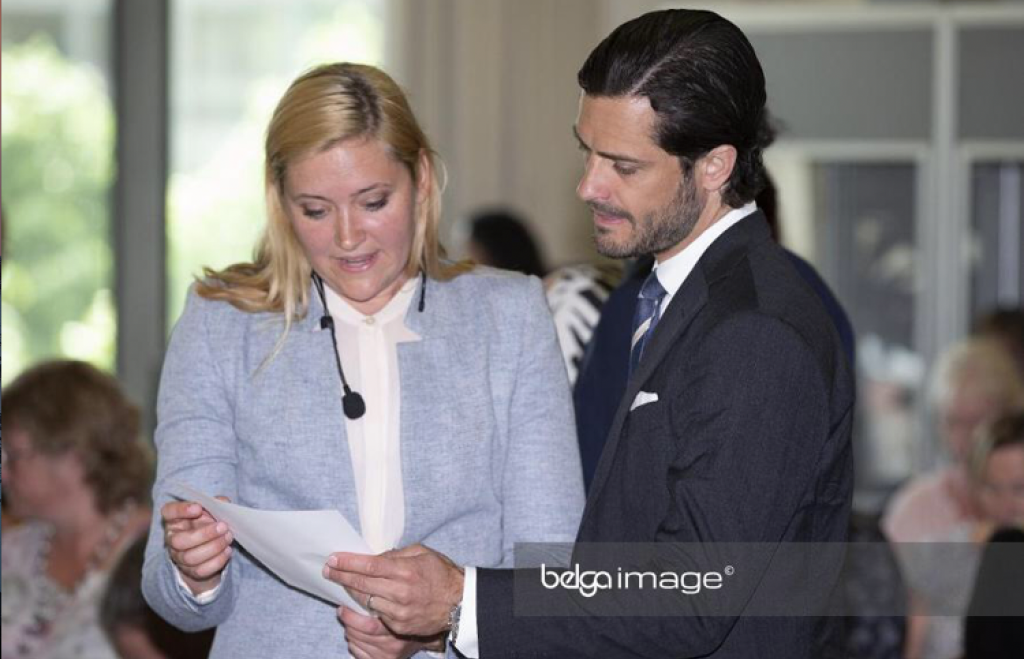
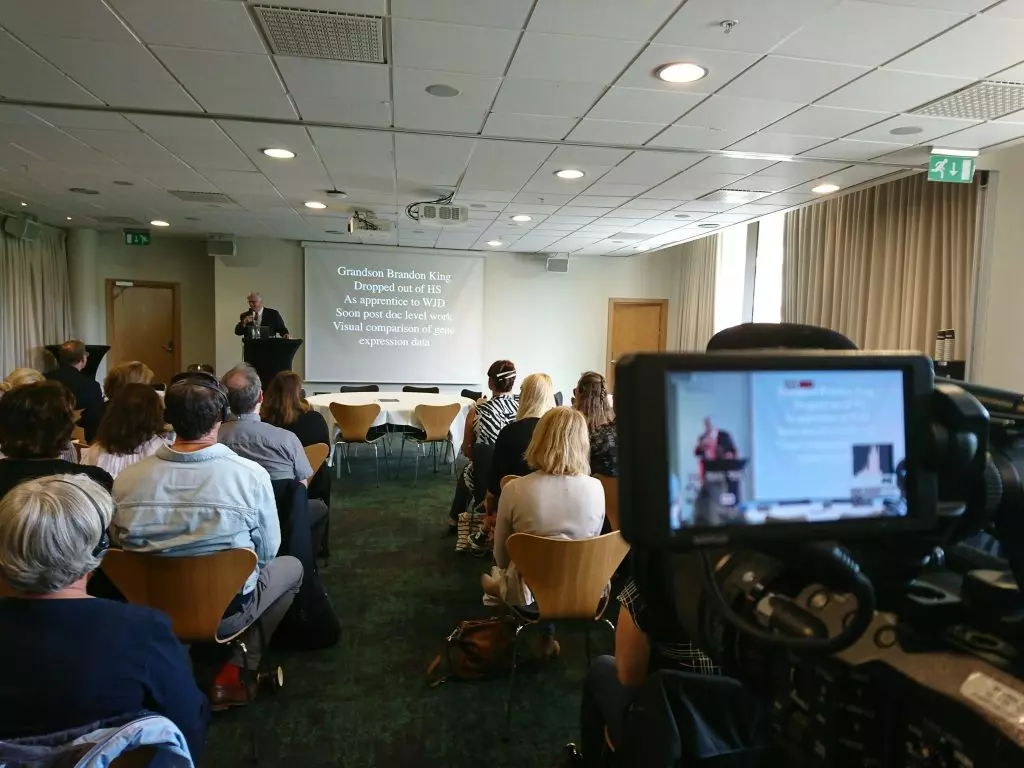
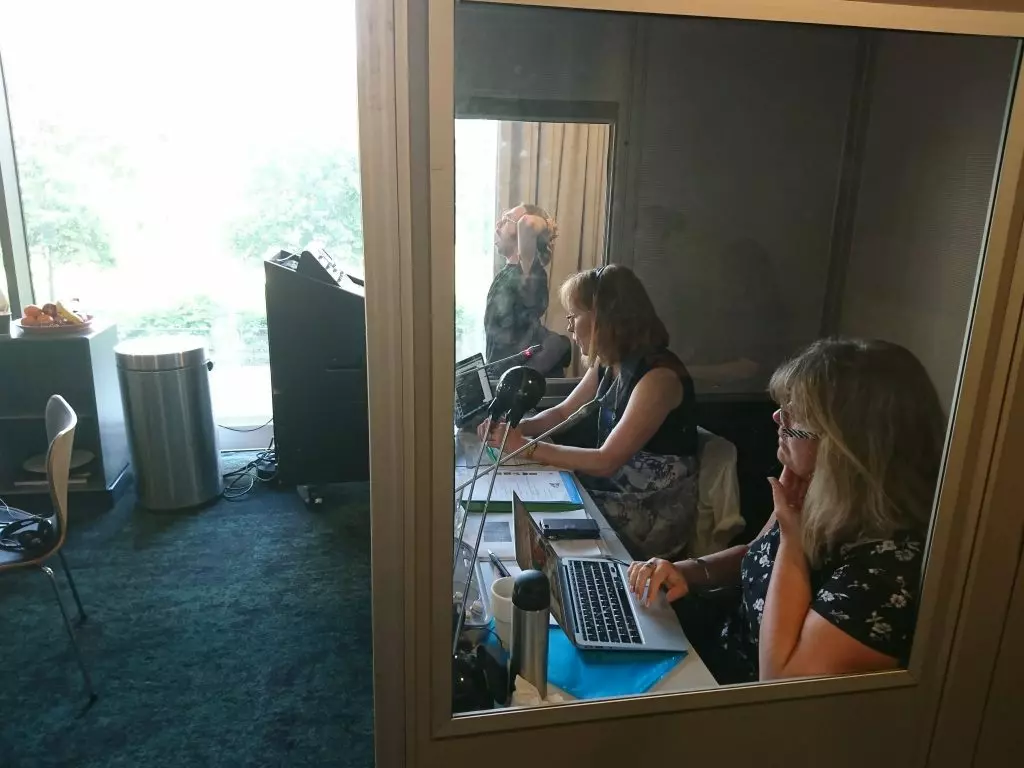
A film from the day:
Presenting a few of the speakers:
DRS. BROCK AND FERNETTE EIDE
The Dyslexic Advantage

The married couple Drs. Brock and Fernette Eide are the founders of the American organization The Dyslexic Advantage. They are also authors of the book with the same title, where they describe among other things the MIND forces. Their organization has previously organized the two conferences ”Dyslexia and Creativity” and ”Dyslexia and Innovation” in the United States. They have not previously lectured in Sweden, so we are extremely proud to inviting them here as main speakers.

FERNETTE EIDE MD
Co-Founder and CEO Contact
Dr. Fernette Eide is co-author of The Dyslexic Advantage and The Mislabeled Child and is an international authority on dyslexia and learning differences. She is a Magna Cum Laude with highest departmental honors graduate of Harvard -Radcliffe College and the University of California-San Francisco, and has been a consultant to the President’s Council on Bioethics and visiting lecturer at the Stanford Graduate School of Education. She directs all educational, dyslexia awarenesses, and student programs and is editor-in-chief for the Dyslexic Advantage magazines.
BROCK EIDE MD MA
Co-Founder and CFO
Dr. Brock Eide is co-author of The Dyslexic Advantage and The Mislabeled Child and is an international authority on dyslexia and learning differences. He is also co-founder of Neurolearning, a social purpose corporation. Neurolearning is creating accessible affordable tools to help children with different learning and cognitive styles, including dyslexia, to flourish. Brock is a Phi Beta Kappa graduate of the University of Washington and University of Washington Medical School, and has been a consultant to the President’s Council of Bioethics and visiting lecturer at the Stanford Graduate School of Education.
THOMAS G. WEST
Author and lecturer

“Understanding the Hidden Talents of Dyslexics in the New Digital Age”
Speaker: Thomas G. West
Thomas G. West is the author of In the Mind’s Eye: Creative Visual Thinkers, Gifted Dyslexics and the Rise of Visual Technologies. Selected as one of the “best of the best” for the year by the American Library Association, this book has been translated into Japanese, Chinese and Korean. West has provided presentations for scientific, medical, art, design, computer and business groups in the U.S. and 19 other countries.
West’s second book, Thinking like Einstein, deals with visual thinking and computer graphic technologies. With his third book, Seeing What Others Cannot See, West investigates how dyslexics and other different thinkers can help to make discoveries and solve problems in innovative and unexpected ways. His talk will focus on several highly successful dyslexics and their families, including a family of visual thinkers and dyslexics in Britain that includes four winners of the Nobel Prize in Physics.
He lastly spoke in Sweden in 2002 at the Uppsala University, so we are very proud to have him visiting Sweden for this day.
GUNNAR BJURSELL
Professor of Molecular Biology. Pioneer in Swedish cultural medicine research.

Associate Professor of Medical and Physiological Chemistry, Ph.D. at Stanford University in California, BRI. Professor at the Department of Clinical Genetics at the University of Aarhus, guest researcher at Imperial Cancer Research Fund Laboratories in London, professor of molecular genetics and professor of molecular biology at the University of Gothenburg, as well as Chalmers Biocentrum’s first director. Initiator and one of the founders of the annual International Science Festival in Gothenburg. Founder of the Center for Culture and Health at the University of Gothenburg and since 2011 the main editor of the Karolinska Institutet’s academic website ”The Cultural Brain”. He has been the vice president of RIFO, member of the educational science committee and has been a part of the Swedish Dyslexia Foundation.
Awarded the French States l´ordre National du Mérite 2001, Lars Salvius’ Prize in 2001, the University of Gothenburg’s Award for Art and Science in 2002, the Swedish Knowledge Prize in 2004, the Längmanska kulturfonden’s great prize in 2006, the Chalmers Medal in 2006, the City of Gothenburg’s merit sign in 2009.
Since 1996 elected member of the Royal Swedish Science and Knowledge Society and since 2008 elected member of the The Royal Academy of Engineering and Science.
Film with English subtitles:
DR. HELEN TAYLOR
Researcher, University of Cambridge

Dr. Helen Taylor is a researcher at the University of Cambridge where she earned her Ph.D. on the emergence of social complexity. Helen was diagnosed with dyslexia herself after nearly failing her first degree but went onto achieve 1st class honours, scholarships to do her Masters and Ph.D. and several awards for the originality of her research. Helen is currently working on a new theory of human evolution, The Evolution of Complementary Cognition, which explains that the way of thinking we’re describing as dyslexic is actually critical to the adaptive success of our species. This research was featured in a BBC documentary in 2018 and will be published academically later this year.
The Evolution of Complementary Cognition explains how our ancestors evolved to specialise in complementary kinds of information processing, and in doing so demonstrates that we have mistakenly identified individuals with dyslexia/ADHD as having neurodevelopmental disorders. These types of information processing have been misunderstood because the education system and reading and writing all rely on aspects of cognition that relate to detailed and repetitive use of information. In fact, individuals with dyslexia/ADHD are specialised to synthesise diverse information, increasing abilities to innovate, change and adapt. This was critical to the survival of our species and is of major relevance across several different fields. At present Helen is investigating its importance for business productivity and adaptation.
GUSTAV KÄLLSTRAND
Historian and Nobel Prize Expert

Gustav works at the Nobel Prize Museum and researches the Nobel Prize. He also frequently gives lectures on the Nobel laureates and is a frequent guest in media, not least as one of the program hosts of the Nobel Prize Festival on December 10.
”Many ways to creativity”
The Nobel laureates are a fascinating material for those interested in creativity. What can we learn from the 900 individuals who in various ways have contributed to the benefit of humanity? Gustav Källstrand considers the most important lesson is that all individuals are creative in their own way – and that our differences themselves therefore are the basis for the development of new ideas.
Film with English subtitles:
SUSANNA CEDERQUIST
Lecturer and councelor

Susanna is a lecturer, author and councelor on dyslexia, having coined ”An Image of Dyslexia”. She has an academic base as a teacher and has further studied special pedagogy. For the last decade she has been engaged in displaying the full picture of dyslexia, including also the dyslexia strengths. One essay as well as the book ”Dyslexia + strengths = true” is in her portfolio. Susanna educates and lectures at schools, colleges, companies, etc. She meets with teachers, principals, students in higher education, teacher students, HR departments, educational staffs within companies, parents to dyslexics, politicians and college students with dyslexia. The terms ”available text and available education” are central in her work. Susanna is dyslexic herself.
How could we relate to dyslexia? Norms? What is the meaning of the concept; ”competence-enhance more”?
– See the full picture of dyslexia, also the strengths!
Since 2016, Susanna holds a seat in the dyslexia expert council for the Prince Carl Philip and Princess Sofia Foundation.
ÖRJAN STRANDBERG
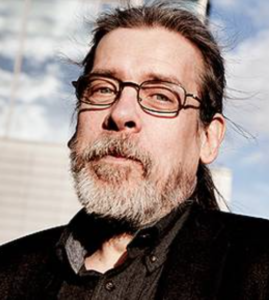
Chairman of The Stockholm Innovators association, Spokesperson for the National Innovators Council, Founder of the Diverse Society, lecturer at the SAE Institute, professional composer, member of STIM’s Distribution Committee, board member of SKAP, writer and lecturer in music psychology, innovation, IPR and film music. Member of the VIDD reference group.
Film with english subtitles:
ART EXHIBITION
On the theme dyslexia and creativity an exhibition is shown throughout the day.participants:
THE FORSBERG SCHOOL

Since a number of months, cooperation between the VIDD project / Susanna Cederquist and the Forsberg School is ongoing. Half-day educations on dyslexia has, among other things, been performed with the students and the cooperation has resulted in a large number of short films and prints.
You can see some of the movies below.
SARA AHLSTRÖM AND FANNY LAUBSCHER

Sara and Fanny are former graphic design students, who graduated last spring. With their graduation project they want to rise a greater understanding about the dedication a person with dyslexia goes through when reading and writing. With the classic format of a book, using only typography and text they visualize the feelings and dedication that many dyslexics experience.
WORDS_EDITION

Using words in contexts in which the purpose is not primarily that they should be read. Could this work?
Viewing the letters and words as visual shapes and components in a pattern. Words are beautiful. Can text be made three-dimensional?
Susanna Cederquist has toyed with perspectives, trying to incorporate and add more dimensions to words.
These photos are not manipulated or processed. Is this how a text is perceived by someone who cannot decode ”flat”? Perhaps.
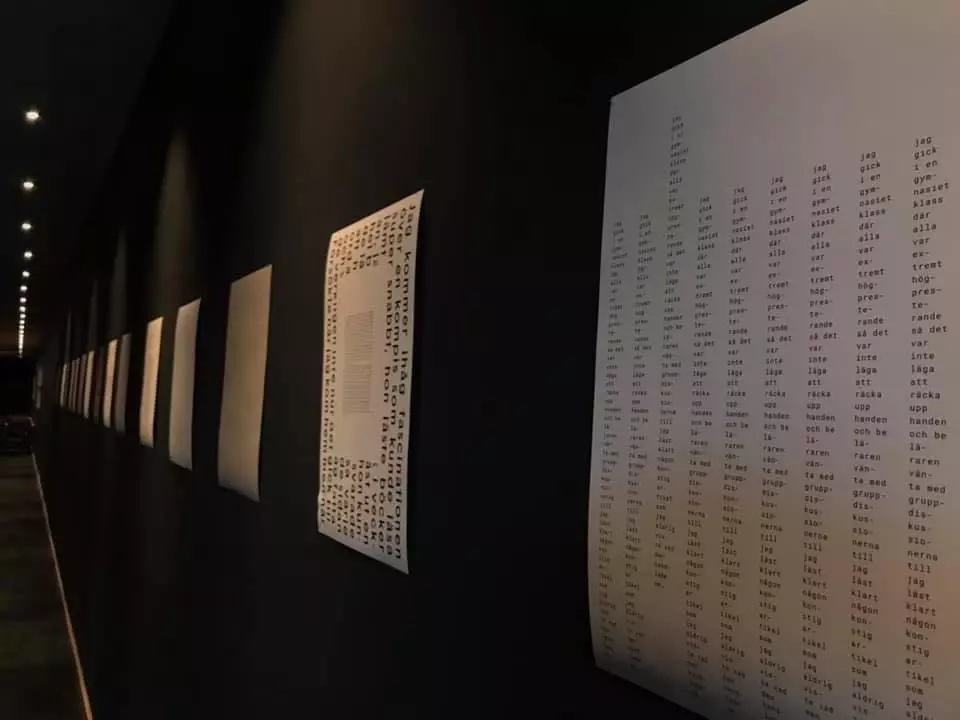
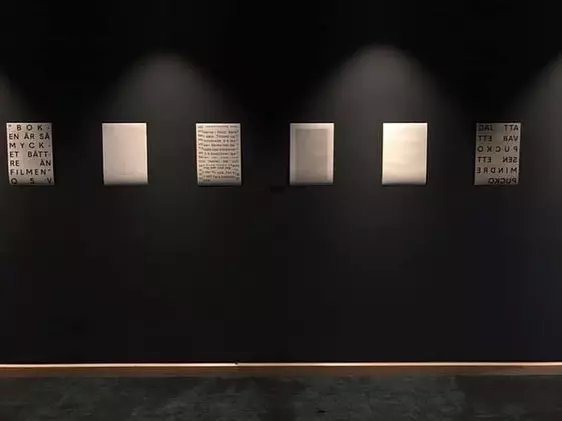
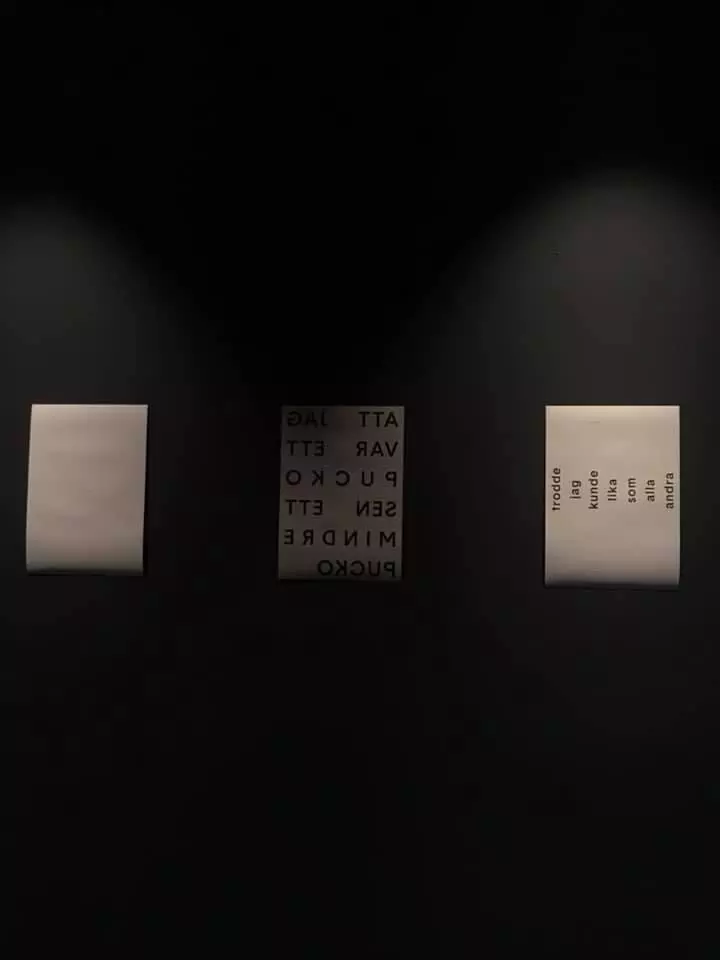
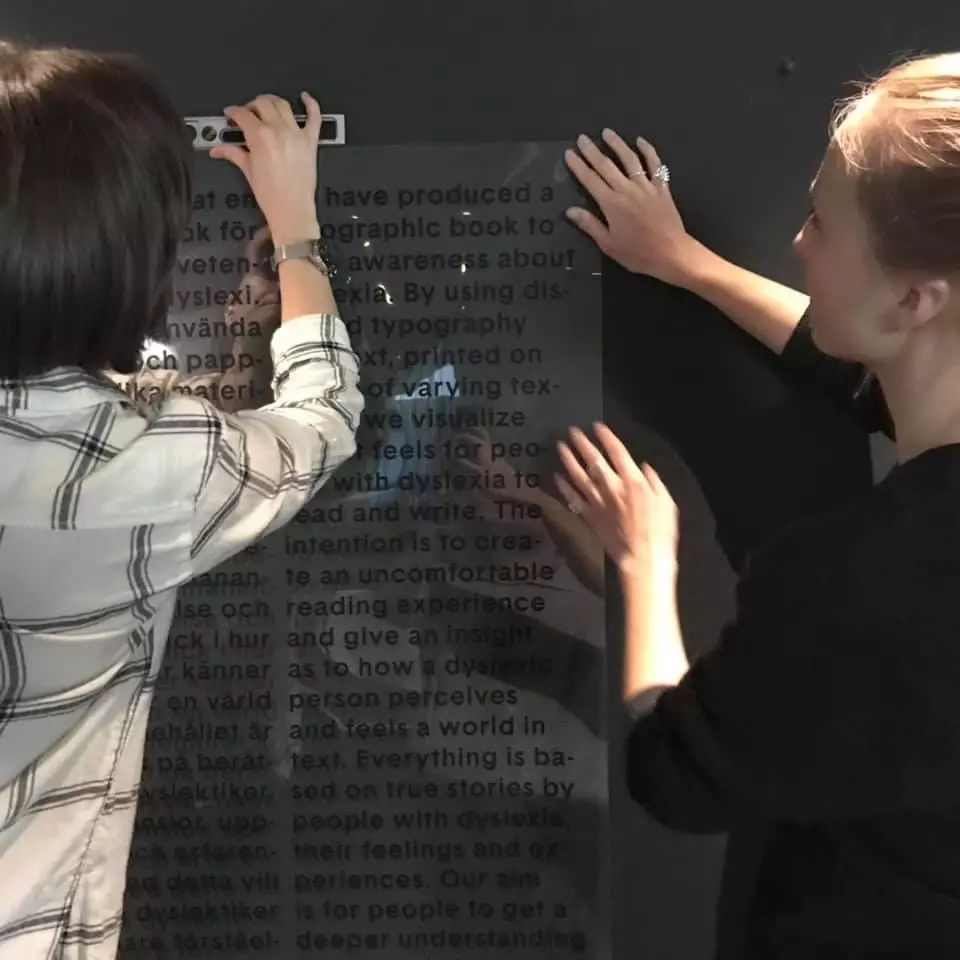
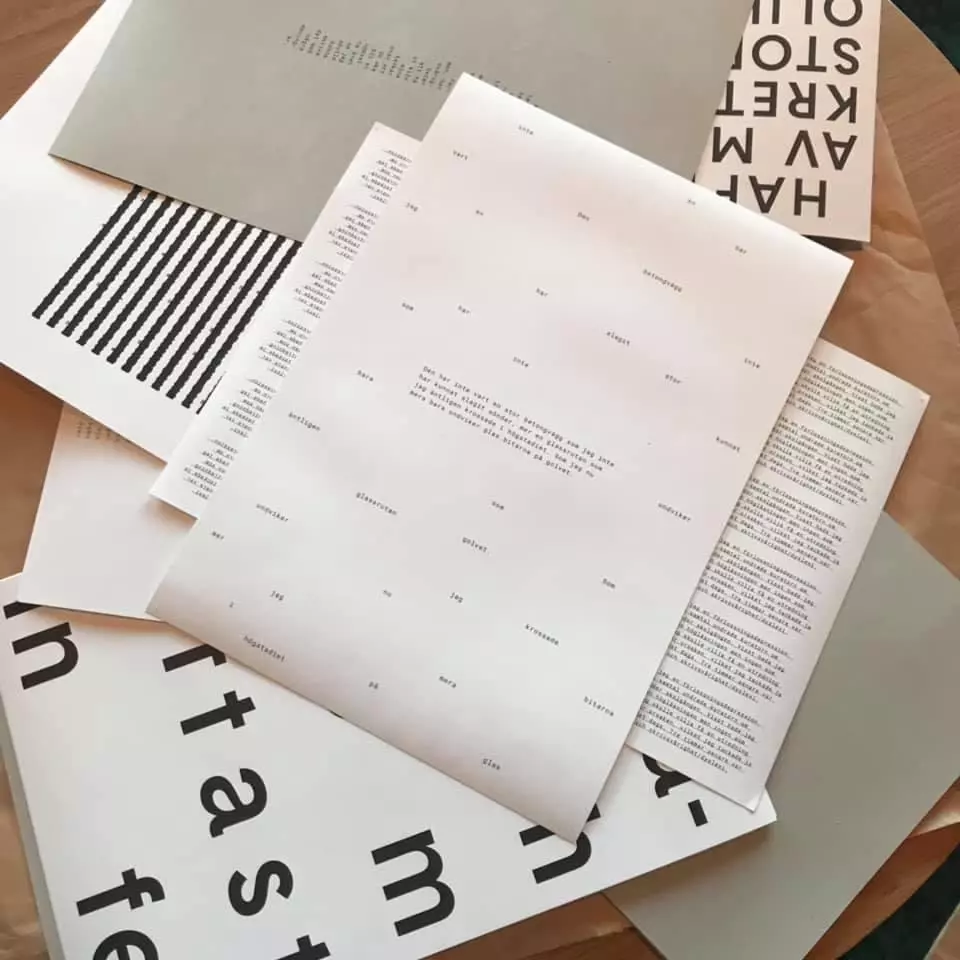
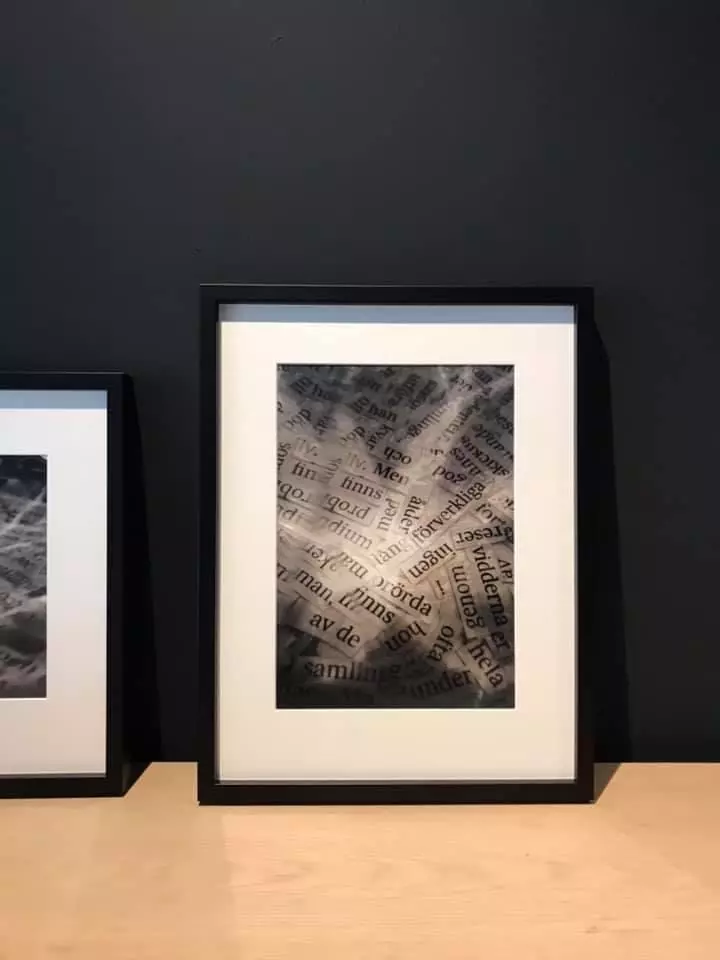
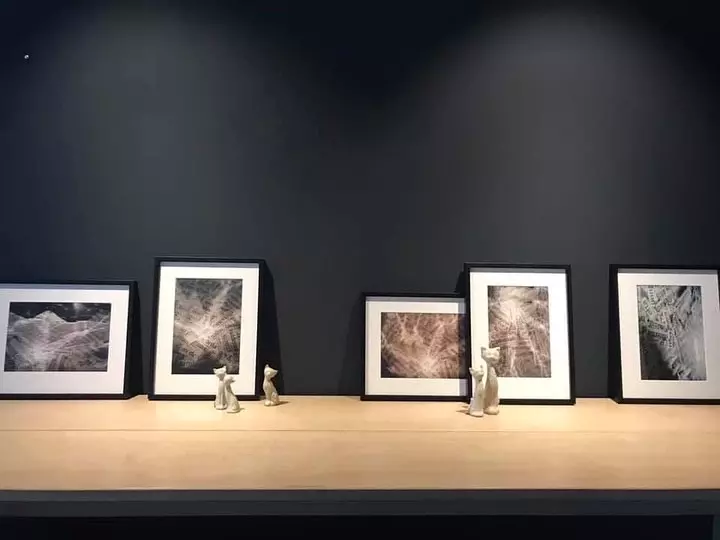
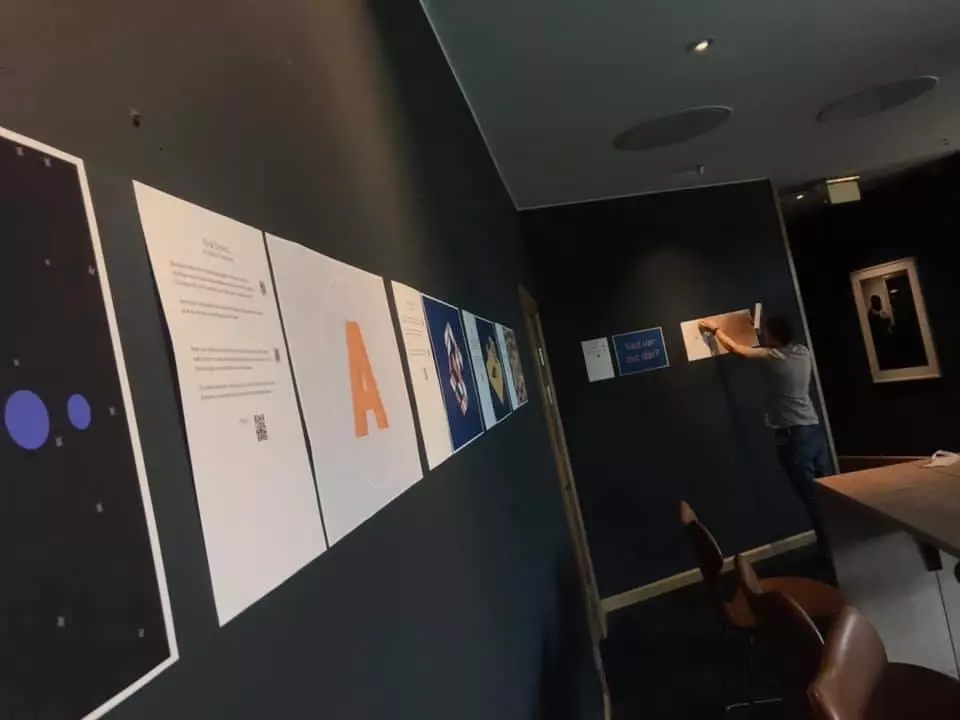
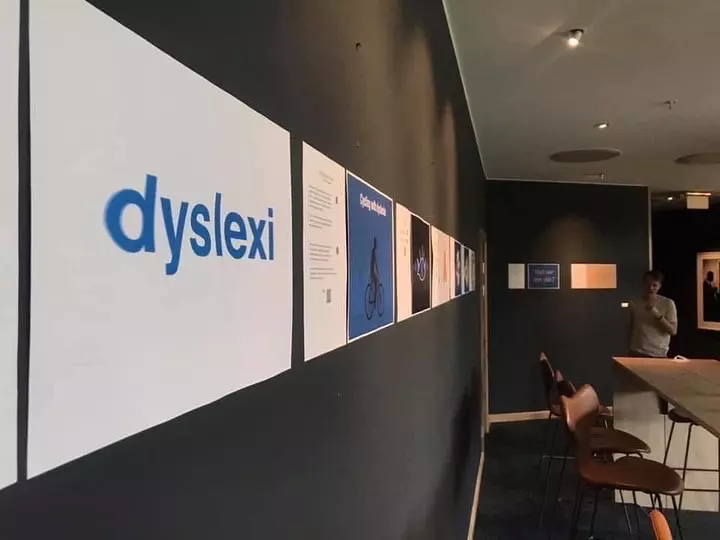
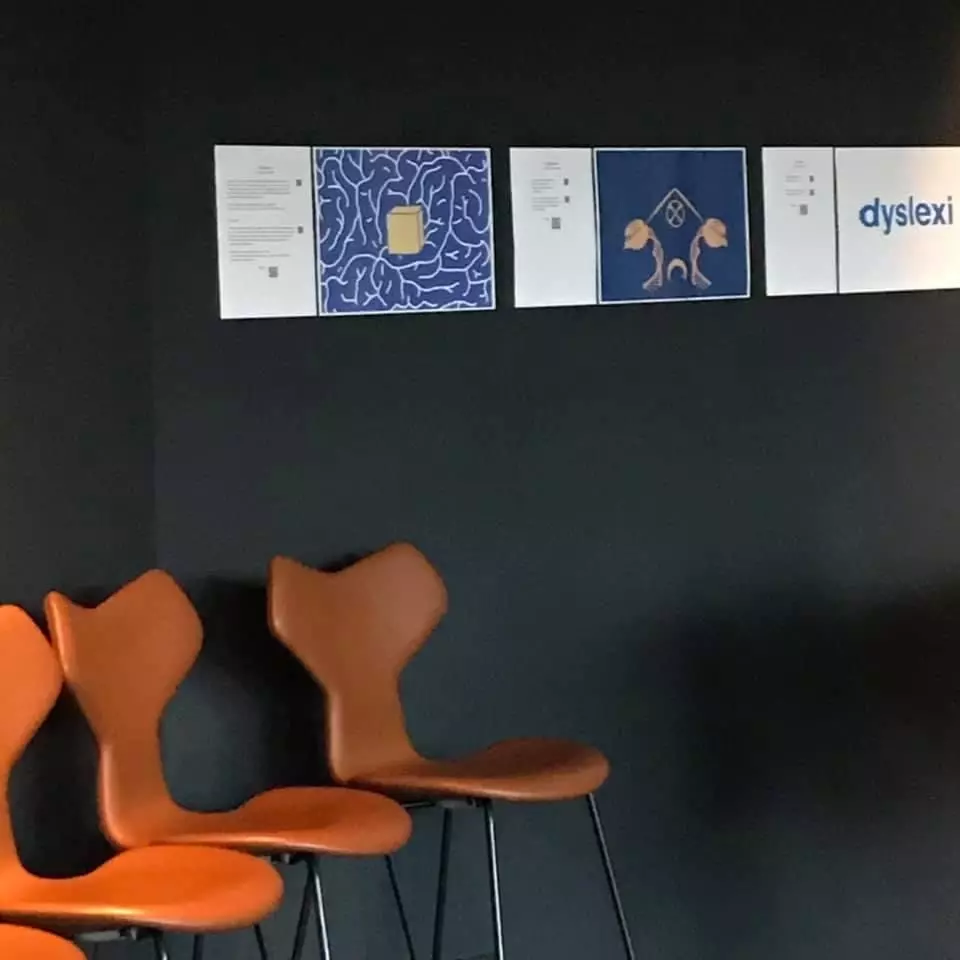

3rd June
Day Conference: 8.30 a.m. – 4.00 p.m.
Place: Clarion Hotel Sign, Stockholm
Östra Järnvägsgatan 35, 111 20 Stockholm
Map: här:
Program
8.30 a.m. Registration
9.00 a.m. VIDD
9.20 a.m. ”Understanding the Hidden Talents of Dyslexics in the New Digital Age” – Thomas G West, USA
10.00 a.m. VIDD and Örjan Strandberg
10.15 a.m. Coffee break
10.45 a.m. ”Bugs Versus Features: Understanding the Dyslexic Advantage” – Drs Fernette och Brock Eide, USA
11.45 a.m. About the art theme and the exhibition
12.00 a.m. Lunch
1.00 p.m. ”The Evolution of Complementary Cognition” – Helen Taylor, England
1.20 p.m. Another greeting from England
1.30 p.m. ”Many paths to creativity” – Gustav Källstrand, Sweden
1.50 p.m. ”Seeing Diversities as Valuable Opportunities” – Gunnar Bjursell, Sweden
2.15 p.m. Coffee break
2.45 p.m. Their Royal Majesties Prince Carl Philip and Princess Sofias’ Foundation/ Dyslexialand
2.50 p.m. ”An image of dyslexia – see the whole picture” – Susanna Cederquist, Sweden
3.20 p.m. Panel and questions
3.55 p.m. Thank you from VIDD
4.00 p.m. End
Welcome!
Clarion Hotel Sign:

See some of the movies here:
”LÄS MIG” by Josefine Simonsen
”I got the theme ”finding the odd one out” which is meant by seeing deviations in pictures and also in text. Many dyslexics are good at interpreting the wholeness in things and it made me think of color theory and movement. I wanted to create something that is difficult to interpret and look at, something that makes the brain and eyes have to focus much more to be able to take in all the information in the film.”
”Thinking” By Amanda Birath
”Did you know that one in three American entrepreneurs have dyslexia?
Inspired by dyslexic Thomas Edison and his invention the light bulb, this movie visualises how one idea paths the way for many others. Perhaps better strategic and creative thinking could provide a real business advantage?”
3D & Dyslexia by Nathalie Torpenberg
People with dyslexia is said to have a strong visual thinking, which might make it easier to recreate three dimensional shapes and symbols, while nondyslectic people more often think in two dimensions.
This means that people with dyslexia have a better ability to think in three dimensions, to take apart and put together three dimensional shapes.
”Cubehouse” by Victor Furustubbe
How do you think outside the box? How do you see the bigger picture? Perception is the word I managed to boil it down to.
”Cycling with dyslexia” by Fredrik Ottosson
With my film I want to show that dyslexia doesn’t have to be connected to anything else than difficulties regarding reading and writing. It sis not about being lazy, less intelligent having trouble focusing.
